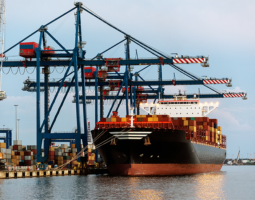EU, US Reach Steel and Aluminum Tariff Agreement
Relief is on the horizon for steel and aluminum importers as the United States and European Union settle a trade dispute dating back to 2018. According to reports, the U.S. will avoid retaliatory rates from the E.U. by replacing its duties with a tariff-rate quota (TRQ) system.
Making a New Deal
The new tariff agreement sprouts from a 2018 spate in which the Trump administration imposed Section 232 duties on steel and aluminum from EU nations. The years since have seen souring trade relations between the two parties. Simultaneously, global prices for steel and aluminum have spiked in the wake of pandemic-era manufacturing and transportation challenges.
Now, the two sides have struck a deal to ease tensions and avoid further retaliation.
Reuters reports that the U.S. will allow specific volumes of aluminum and steel imports from the EU duty-free. Imports past that limit will still be subject to the Section 232 tariffs at rates of 10 percent and 25 percent respectively.
- TRQ will begin on January 1, 2022.
- Products currently included in Section 232 exclusions will not count toward quota.
- Exclusions will auto-renew through 2023.
- Current estimates place the quota at 3.3 million tons — imports past this threshold are subject to tariffs.
- Derivative goods will not be subject to tariffs.
Compromise Mitigates Retaliation from Europe, Sets Joint Focus on China
The new TRQ compromise for aluminum and steel seems to have satisfied the EU. As a result, the European governing body will not proceed with its plan for retaliatory tariffs.
Instead, reports have framed the tariff agreement as a pathway for coordination in corralling China. Chinese manufacturers in recent years have flooded the market with excess steel and aluminum capacity. Consequently, The EU and U.S. are each keen for a rebuttal. Plus, the two parties are aiming to avoid importing materials from China’s high carbon-emission production processes.
Importing steel or aluminum from Europe? Consult with Scarbrough to ensure your operation is ready to take advantage of the new TRQ system and extended Section 232 exclusions.

